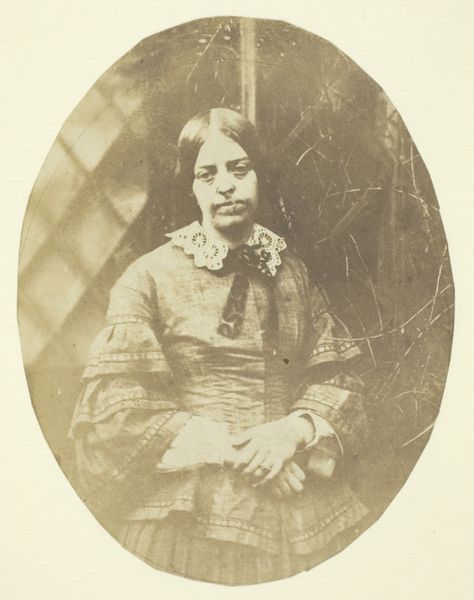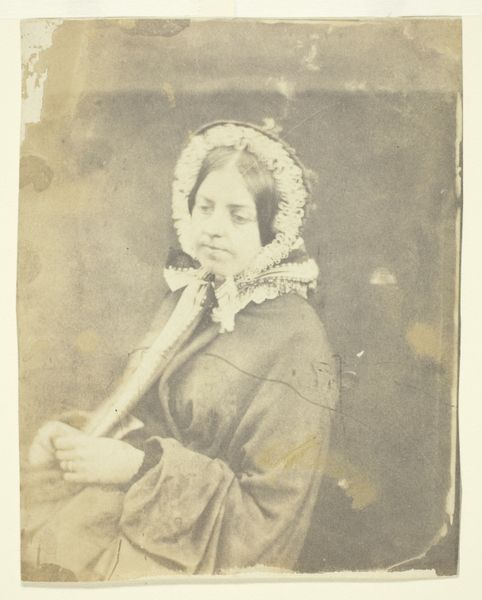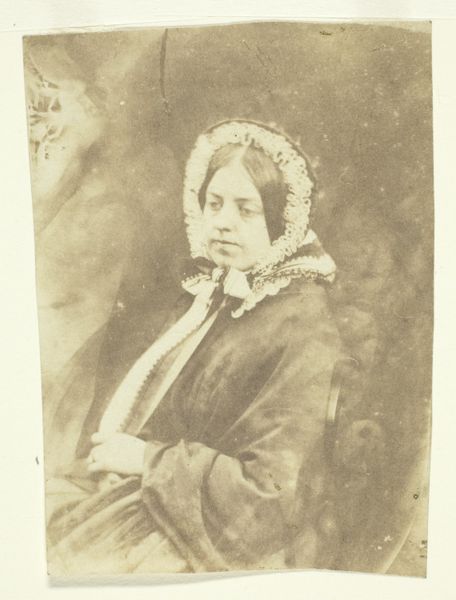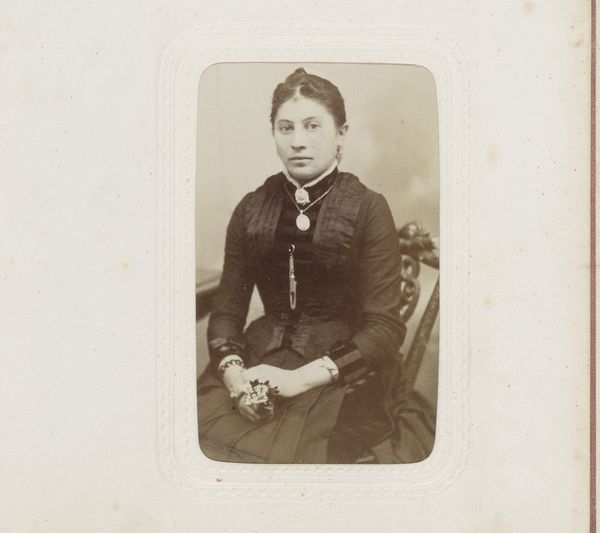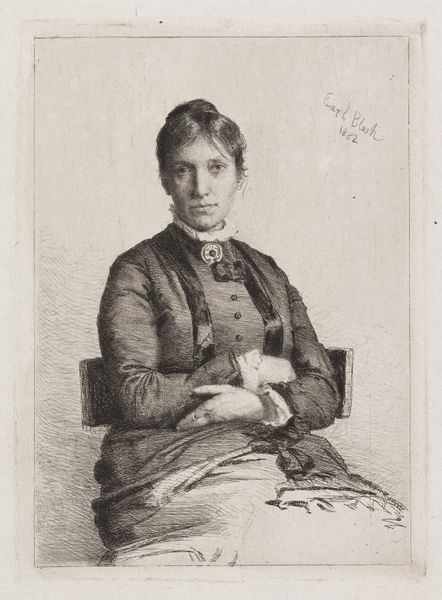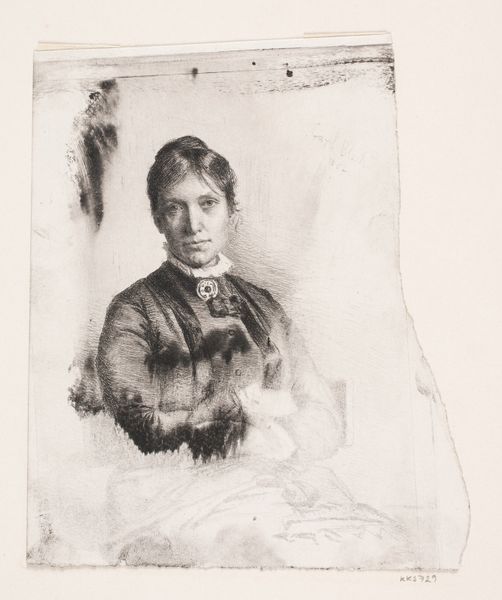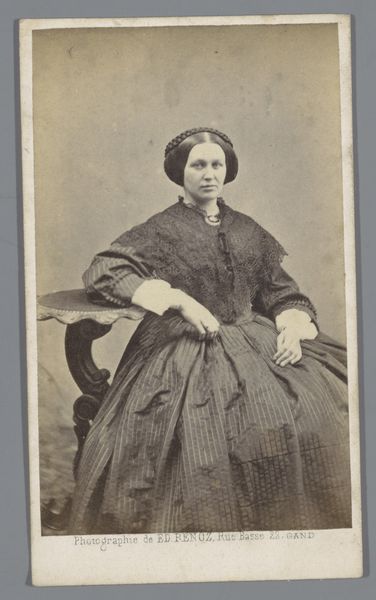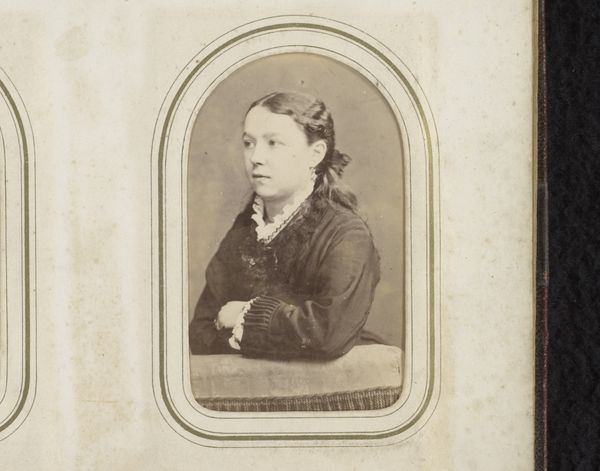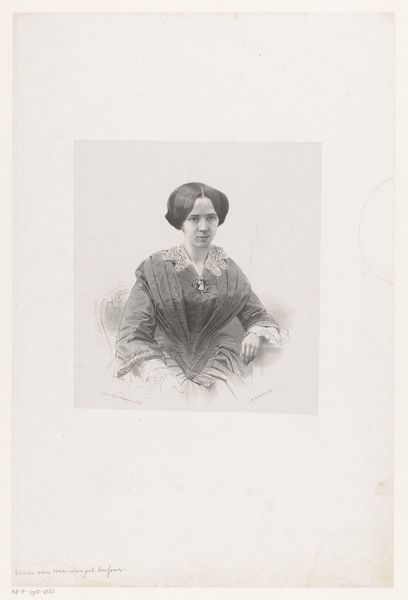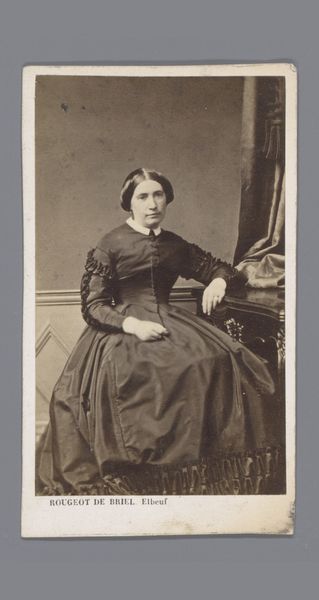
daguerreotype, photography
#
portrait
#
daguerreotype
#
photography
Copyright: Public Domain
Curator: This is “Mrs. Watson,” a daguerreotype dating from 1843 to 1847, created by the pioneering photographic duo Hill and Adamson. It resides here at the Metropolitan Museum of Art. Editor: A melancholy image, isn't it? The oval format frames a woman cloaked in shadows, seemingly lost in thought, with her hand gently touching her face. Curator: The photograph's aesthetic value is undeniable; look closely at the soft tonal gradations achievable with the daguerreotype process. It’s a marvel of light and shadow, creating depth and dimensionality in a relatively new artistic medium. Editor: Yes, and consider how radical this was. Photography democratizing portraiture; offering a wider segment of the population the possibility to immortalize their likeness. Who was Mrs. Watson? What was her status that she could afford such a thing? Curator: Precisely. The meticulous arrangement of her shawl, the delicate light catching the white of her bonnet, it all draws our eye to the compositional structure, a masterclass in early photographic portraiture. Editor: It's tempting to imagine the societal pressures Mrs. Watson may have faced in Victorian society; to read in her face a hint of the restrictive roles placed upon women at that time. Curator: A compelling speculation! However, my primary interest is in the pure formal interplay of line and shape—the visual balance that establishes a state of contemplative equilibrium. Editor: For me, art breathes most fully when understood within its context. Knowing something about how photographic portraits reflected status at the time helps complete our reading of the image. Curator: Perhaps it is the tension between the historical context and compositional elements that continues to provoke responses from viewers. Editor: Indeed. Thank you for unveiling a perspective of structure for a portrait, a new insight for me. Curator: And I appreciate your contextual perspective on a piece whose lines and textures once defined it to me, thank you.
Comments
No comments
Be the first to comment and join the conversation on the ultimate creative platform.
